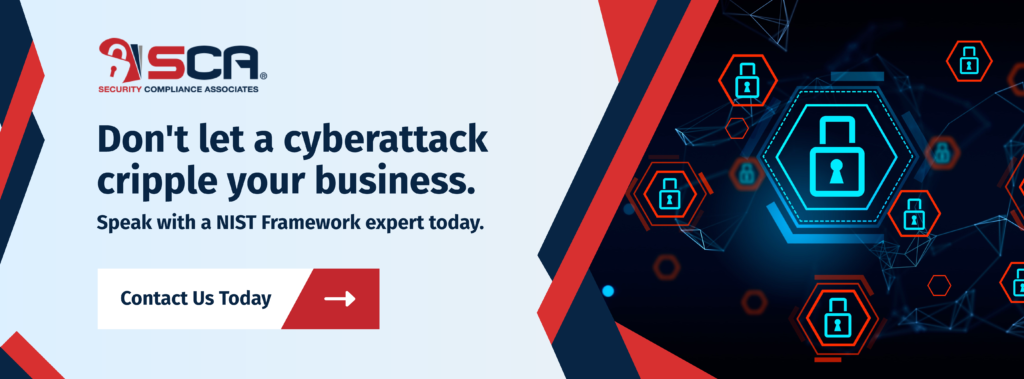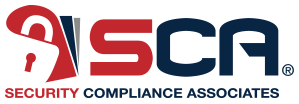
NIST Third Party Risk Management: Managing Supply Chain Risk
Cybersecurity relies heavily on established standards to fortify digital landscapes against evolving threats. Among the influential frameworks, the National Institute of Standards and Technology (NIST) standards are pivotal.
Get Started With Your NIST Assessment Now
The intricacies of managing third-party cybersecurity risks are gaining prominence, and NIST standards serve as a bedrock in navigating and addressing these challenges effectively. This article explores the specific role of NIST in third-party risk management, focusing on key publications such as SP 800-53 Rev. 5, and SP 800-161 Rev. 1.
Understanding NIST’s Role in Third-Party Risk Management
As organizations increasingly rely on external partnerships and supply chains, safeguarding against potential threats and vulnerabilities becomes paramount. In this context, NIST provides a comprehensive framework and set of guidelines, offering a structured approach for organizations to manage and mitigate risks associated with their third-party relationships, especially regarding supply chain security.
That is where the special publications come into play. As a constantly evolving framework, NIST systematically issues updates depending on the feedback received from relevant organizations. NIST SPs are developed through a collaborative and consensus-driven process that involves input from industry experts, government agencies, and the public. They are designed to address specific challenges and issues faced by organizations in different sectors and provide practical guidance to improve the security and resilience of information systems.
Related Content: NIST Cybersecurity Framework Certification: All You Need To Know
NIST Special Publications
Some notable NIST Special Publications include SP 800-53 (Security and Privacy Controls for Federal Information Systems and Organizations), SP 800-61 (Computer Security Incident Handling Guide), SP 800-171 (Protecting Controlled Unclassified Information in Nonfederal Systems and Organizations), and the Cybersecurity Framework (SP 800-53). These documents are widely used by government agencies, private organizations, and other entities to enhance their cybersecurity posture and align with recognized standards and best practices.
So, let’s get into the details of some of these SPs!
SP 800-53 Rev. 5:
SP 800-53 Rev. 5, shows a notable shift towards a more proactive and risk-based approach to supply chain security. This evolution reflects the recognition that traditional security measures alone cannot counter the evolving threats within supply chains. The update incorporates modernized controls emphasizing continuous monitoring, enhanced risk assessment methodologies, and a more comprehensive understanding of the supply chain ecosystem. This evolution empowers organizations to better anticipate, detect, and respond to potential risks within their supply chains, strengthening overall cybersecurity resilience.
One pivotal aspect of the updated framework is the Strategic Planning (SR) control group within the Supply Chain Risk Management domain. SP 800-53 Rev. 5 places a heightened focus on Supply Chain Risk Management, acknowledging its critical role in ensuring the integrity and security of the entire supply chain. The key components of the SR-Supply Chain Risk Management control group include strategic planning processes, supply chain risk assessments, and implementing risk mitigation strategies. By delineating these components, NIST aims to equip organizations with a structured approach to strategically manage and mitigate risks within their supply chains, fostering a more resilient and secure ecosystem in the face of emerging cyber threats.
SP 800-161 Rev. 1:
NIST Special Publication 800-161 Revision 1 (SP 800-161 Rev. 1) is a critical extension to the NIST framework, specifically addressing the complex landscape of cybersecurity supply chain risks. This publication outlines guidelines and practices to enhance the security of information and communication technology (ICT) supply chains. SP 800-161 Rev. 1 emphasizes the need for a systematic and comprehensive approach to identify, assess, and manage risks throughout the entire lifecycle of ICT products and services. It builds upon foundational principles established by other NIST publications, such as SP 800-53, creating a cohesive strategy that organizations can employ to bolster their cybersecurity defenses within the intricate web of supply chain interactions.
Key elements of SP 800-161 Rev. 1 include detailed insights into the processes and procedures organizations should adopt to strengthen their cybersecurity posture in supply chains. It offers a structured framework for addressing issues like counterfeit and maliciously tainted products, unauthorized access, and the compromise of critical functions within the supply chain. By providing a comprehensive set of guidelines, SP 800-161 Rev. 1 aids organizations in understanding, evaluating, and mitigating the diverse array of cybersecurity risks associated with their supply chain activities. This publication is a valuable resource for entities seeking to effectively navigate the intricate ICT supply chain security landscape.
Preparing for the Future: NIST CSF 2.0
While there is no certainty as to where NIST CSF 2.0 will go in the coming months, there are some things we like to suggest organizations consider when it comes to NIST third-party risk management,
NIST is incorporating substantial input into CSF 2.0, introducing a new “Govern” function to underscore the significance of cybersecurity risk management governance outcomes. While the five existing CSF Functions have gained widespread acceptance in national and international policies, including ISO standards, NIST recognizes the advantages of expanding the focus on governance in CSF 2.0.
This novel crosscutting function will underscore the critical role of cybersecurity governance in managing and mitigating cybersecurity risk. It encompasses activities such as determining priorities and risk tolerances, assessing risks and impacts, establishing policies and procedures, and understanding roles and responsibilities. Elevating governance to a function emphasizes its importance in aligning cybersecurity activities with enterprise risks and legal requirements, both within the organization and throughout its supply chain.
CSF 2.0 will elucidate how an underlying risk management process is fundamental for identifying, analyzing, prioritizing, responding to, and monitoring risks to enhance the discussion of the relationship between governance and cybersecurity risk management. It will detail how CSF outcomes support risk response decisions and provide examples of risk management processes (e.g., Risk Management Framework, ISO 31000) that can underpin CSF implementations.
Additionally, CSF 2.0 will expand its coverage of supply chain considerations, building upon the enhancements made in the previous update (CSF 1.1). Recognizing the increasing focus on developing guidance for trust and assurance in technology products and services, CSF 2.0 will comprehensively address supply chain risk management. The release will bring attention to the complexities of communicating cybersecurity requirements with stakeholders, understanding Cyber-Supply Chain Risk Management (C-SCRM), making informed buying decisions regarding off-the-shelf products and services, and incorporating third-party management considerations across the Framework Functions.
As organizations prepare for NIST CSF v2.0, they should anticipate changes, challenges, and opportunities. While the impact of the release should be manageable for those already leveraging the current framework, the introduction of the “Govern” Function and expanded supply chain content will necessitate a higher level of scrutiny.
Organizations should be ready for a slightly different approach to year-over-year security program analyses and third-party risk assessments, with increased attention on governance and supply chain considerations. Overall, CSF 2.0 is expected to provide valuable support, but proactive preparation is advised to navigate the changes effectively.
NIST Traceable Standards for Supply Chain Management
Supply chain mapping plays a crucial role in information security, especially within the context of a robust information security measurement program. As organizations increasingly rely on complex and interconnected supply chains for various products and services, understanding and assessing the security posture of these supply chains becomes paramount.
Supply chain mapping involves identifying and documenting all components, entities, and dependencies within the supply chain that contribute to the organization’s information systems. This mapping process helps organizations gain a comprehensive view of the potential risks and vulnerabilities associated with their supply chain. It allows them to evaluate the security measures implemented by suppliers, vendors, and partners, ensuring that the overall security ecosystem is resilient.
Integration of supply chain mapping into an information security measurement program enhances the program’s effectiveness in several ways:
Risk Assessment: Supply chain mapping enables a thorough assessment of potential risks associated with each link in the supply chain. This allows organizations to identify critical areas that may require heightened security measures.
Vulnerability Management: By understanding the components and dependencies in the supply chain, organizations can proactively manage vulnerabilities. This includes monitoring and addressing potential weaknesses in the supply chain that could impact information security.
Compliance and Assurance: Supply chain mapping aids in ensuring that the entire supply chain adheres to necessary compliance standards and security protocols. It assures that each entity within the supply chain meets the required security criteria.
Incident Response Planning: In the event of a security incident, supply chain mapping facilitates a swift and targeted response. It allows organizations to quickly identify the source of the incident within the supply chain and implement remediation measures.
Performance Measurement: Including supply chain mapping in information security measurement programs provides a holistic view of the security landscape. It allows organizations to measure the effectiveness of security measures not just within their internal systems but also across the extended supply chain.
In summary, supply chain mapping is an integral component of an information security measurement program as it enhances risk management, vulnerability assessment, compliance assurance, incident response, and overall performance measurement across the entire supply chain ecosystem. This holistic approach ensures that organizations have a comprehensive understanding of their security posture and can implement targeted improvements where needed.


